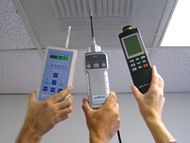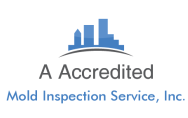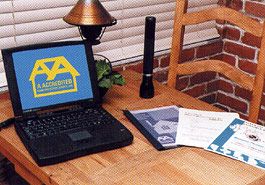Air Quality Tallahassee Pensacola Panhandle
On commercial buildings we offer mold testing and indoor air quality testing in Tallahassee, Pensacola, and all of the Florida Panhandle.
We do not just test your air, but we are determined to find where the issue is coming from and why. Our goal is to understand the root cause so the problem can be addressed in such a way that the chemical problem or mold does not keep coming back.
at A Accredited Inspection Service We specialize in chemical related IAQ or indoor air quality testing and consultation services as well as mold, allergen, and humidity problem investigations.

Three tools for testing indoor air quality including a formaldehyde meter left, a photoionization detector center, and a particle counter right.
DO YOU NEED PROFESSIONAL MOLD TESTING OR INDOOR AIR QUALITY TESTING?
Since 2003 our consultant has provided professional indoor air quality testing in all of Florida. To aid you with fair and trusted services, we are a no-conflict of interest company. We only test and inspect your property and do not offer corrective services.
We present a comprehensive report clearly stating the location and likely cause of the air quality issue. In addition, we identify the types and quantities of chemicals present to the parts per billion. Most importantly, we give written advice on recommended corrective measures.
If you are seeking an indoor air quality consultant in Pensacola, tallahassee, or anyplace in the Fl Panhandle you have come to the right place.
REASONS TO TRUST US
INDOOR AIR QUALITY TESTING
EXPERIENCE
You can trust your valuable property and health to experienced hands. We have been providing reliable services in the form of indoor air quality testing in your area since 2003. To see examples of some of our past commercial building IAQ inspections click here. We have the experience you have been looking for. At the bottom of this page I give an example of a past commercial building air quality inspection in Tallahassee.
 INDOOR AIR QUALITY TESTING AND MOLD INSPECTION
INDOOR AIR QUALITY TESTING AND MOLD INSPECTION
CERTIFICATIONS
When using A Accredited Inspection Service you will be hiring a mold testing and air quality testing service that is properly certified.
The CIEC Certification is without any doubt one of the nations highest mold and indoor air quality related certifications. Most certifications require nothing more than two days of classes in a hotel room. You can verify our certification by clicking here.
Our CIEC certification requires 8 years of experience, or 8 years of education, or a combination of relevant experience and secondary science education. The experience and education requirements must add up to a total of eight years. There is quite obviously a big difference between a certification that was two days in the making and one that was 8 years in the making.
In addition to strict prerequisites, a rigorous exam taken at a proctored testing center is required. Your local mold inspector Daryl Watters received a 85 on his CIE exam in 2004 and a 96.6 on his even harder CIEC exam in 2015.
 OUR
OUR
REVIEWS
You don’t have to trust us, we have plenty of 5-star reviews, always check reviews and take the time to read them. Just click here to see what our clients have to say about our mold services.
OUR
LICENSE
Of course we are licensed. Here is a link so you can verify our license status. License number MRSA 328. We obtained our mold assessment license the very first year mold licenses were offered in the state of Florida! Unfortunately, the state of Florida offers no license for indoor air quality testing.
OUR INDOOR AIR QUALITY TESTING
REPORT
Our mold testing and indoor air quality testing consultant will provide a comprehensive inspection report that gives various causes of air quality problems. We also provide environmental readings and recommendations about the best possible remedy. The written report will contain photos and elaborated details. The report will cover various issues related to air quality problems at your home or commercial building.
We not only use mold inspection reporter (MIR) software forms for creating chemical related indoor air quality reports, allergen reports, humidity problem reports, and mold reports. We also created (MIR). It is used by many other IAQ consultants and mold inspectors nationwide.
Thus, you will receive a quality air quality report.
CASE STUDY OF AN ACTUAL INDOOR AIR QUALITY INVESTIGATION WE CONDUCTED IN THE FL PANHANDLE.
Our IAQ investigator was asked to identify the source of foul smelling chemical odors in a commercial building complex located between Pensacola and Tallahassee. More specifically the odors were in a massive hospital building complex.
A MYSTERY CHEMICAL
Previous investigations by two previous Tallahassee mold inspection and indoor air quality testing companies was able to verify odors. However, these two previous companies were not able to provide any answers at all as to what they were. The inspectors air quality tests all indicated extremely low indoor pollution levels in the buildings air.
Despite testing and inspections by two different firms, and sample analysis performed by two different respectable labs, the air always came up extremely clean despite the presence of obvious foul odors.
Fortunately we were able to clearly identify the source and identity of the contaminant. Our firm was not able to identify the chemical and it’s source via the air testing we preformed. Out of all three companies that did testing, none of us came up with anything unusual in the tests. Our indoor air quality consultant solved the mystery. It was the inspectors eyes and nose used in a visual inspection that located the indoor air contaminants source.
TEXT FROM THE IAQ TESTING REPORT
Various building occupants described the odor in the building as mold odors, rodent odors, chemicals, diapers odor, and even salt marsh, seaweed, and swamp odors. The inspector has dealt with many odors as an indoor air quality testing consultant and mold inspector for years. I am familiar with all the above odors. I can assure you the odor was not from mold, rodents, swamps, or any of the other possible sources suggested by hospital staff. It was a chemical odor.
This odor in the skylight area above the complaint area was identical to radiator fluid odor, or calcium lime and rust remover sold at many hardware stores.
The substance creating the odors did not show up on the previous consultants tests, nor on our own air testing results. It was foul smelling and was present in the air in a very sensitive area of the hospital where very young infants were cared for.
INDOOR AIR QUALITY PROBLEM FOUND
A source of this radiator fluid smelling chemical or antifreeze smelling indoor chemical was abundance in a large drum in another building. It was identified by smell by our inspector to be the same smell found in the infant care area. The chemical is called Ancosteam 2011 and is from ANCO Anderson Chemical Company.
INDOOR AIR QUALITY PROBLEM PATHWAY FOUND
How did this antifreeze and rust remover called Ancosteam get from a barrel in a boiler room three buildings away? How did it end up in the infant care ward far from the source?
From interviewing the facility engineer, it was found that the Ancosteam is purposely put into the boiler systems condensate water pipes three buildings away.
It travels via pipes through three building complex preventing rust and freezing.
HOW DID THE ANCOSTEAM ESCAPE FROM THE PIPES AND ENTER THE BUILDING IN QUESTION?
The inspector visited the steam decontamination room and the laundry room of the building near the infant ward. This is where the odors were causing a problem. The odor could be smelled escaping from the steam sterilizers. Steam sterilizers were releasing steam to sanitize dirty laundry, and to sterilize hospital equipment in the area. From the steam releasing sterilizers the fumes floated up towards the ceiling where it traveled down the hall to the neo-natal care unit. A ladder and the inspectors nose confirmed that the chemical was floating near the ceiling and traveling from the point of release in the steam denomination room. It was floating to the problem areas in neo-natal care unit.
HOW DID THE ANCOSTEAM ESCAPE FROM THE PIPES AND ENTER THE STEAM PIPES ?
The chemical substances could only pass from the water pipes to the steam pipes via cracked heat exchangers.
In most cases cracked heat exchanges leak carbon monoxide. In this case they were leaking antifreeze from boiler pipes and into steam pipes.
SOLUTION
Have the manufacturer or other appropriate service provider check the heat exchangers for cracks and replace cracked heat exchangers. If they do not see cracks have them check again. The heat exchanges appeared to be leaking antifreeze from boiler pipes that carry water into sterilization steam pipes.
Ancosteam 2011 was not a problem in the pipes. The problem was that it was escaping. It escaped from water pipes into steam pipes via cracked heat exchangers. It floated up to the ceiling and entered the neonatal infant care unit of the hospital.
Mold Testing and Indoor Air Quality Testing
Tallahassee Pensacola Panhandle
A Accredited Mold Inspection Service, Inc.
If you need mold testing or IAQ testing contact us.
1-888-381-6651









